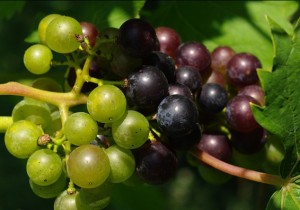Missouri grapevines saved the European wine industry in the 1800s. Now a Missouri State University researcher is building on that work for broader results.
When a rootstock of Missouri grapevines were sent to Europe, they helped save that continent’s wine industry from a non-native pest that they were already immune to. Professor Laszlow Kovacs says that is inspiring as he now studies the grape’s ability to adapt to different conditions, which is built into its genome.
“The grape is an excellent model plant for woody perennial species, so for fruit trees for example, because it has a relatively small genome so it’s much easier to study the genome.”
Kovacs says agriculture is threatened by climate change, and says the answer to that challenge could be found in the grape genome.
“Wild plants already solved this problem because they adapted to different environments. Some plants are adapted to very, very dry and hot conditions. Others adapted to moist conditions. So, we have to figure out how these plants did that, what is in that genome that enabled them … what genes enabled them to live under these conditions.”
He says if it can be learned what makes grapes able to handle difficult conditions, that information could breed crop plants that will thrive in them. He expects to have some findings to publish next year.



